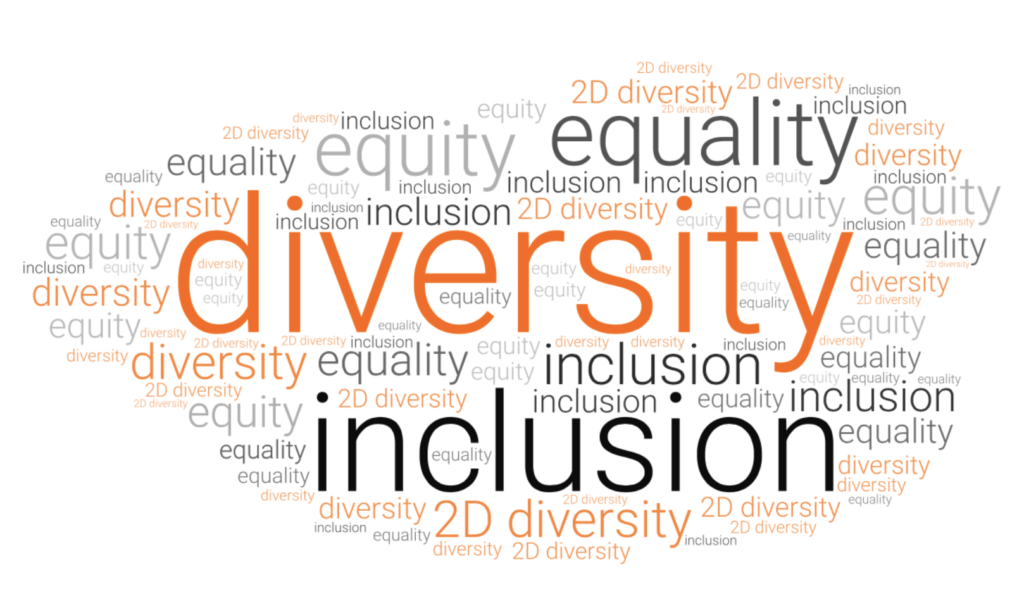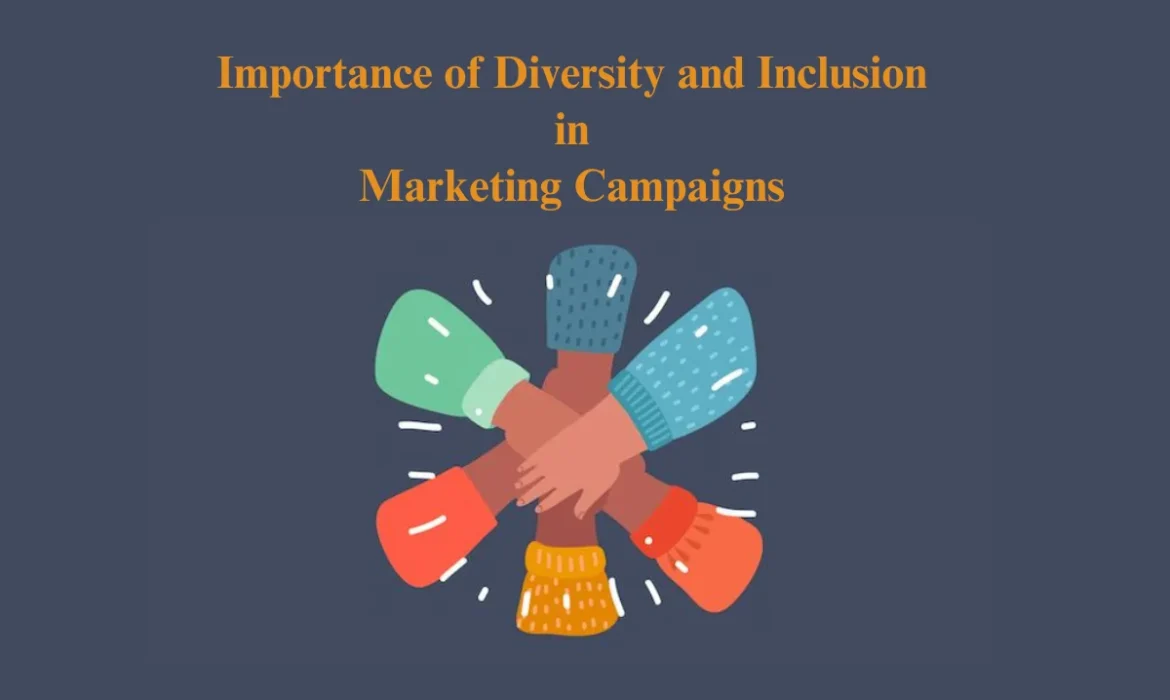Importance of Diversity and Inclusion in Marketing Campaigns
As technology rapidly evolves, it’s reshaping the very core of marketing dynamics. Gone are the days when a few catchy phrases and flashy images were enough to captivate an audience. Today’s consumers expect more—they seek content that resonates with their personal experiences and cultural backgrounds So the diversity and inclusion in Marketing Campaigns becomes more essential. Ignoring these critical elements can lead to missed opportunities and potential losses. Marketers need to recognize that today’s audience is diverse, with rich identities and unique experiences, and campaigns that reflect this will foster deeper connections and long-term loyalty.

What is Diversity and Inclusion in Marketing
Diversity and inclusion in marketing is a strategy that involves content creation considering numerous cultures, perspectives and identities. In other words, diversity and inclusion in marketing refers to the advertising efforts that involve age, gender ethnicity and appearance.
You may wonder why it is so important for the audience? This article will explain everything you need to know about
Diversity and Inclusion
As the name suggests, diversity reflects people belonging to various groups. These are not limited to gender, race and ethnicity. While inclusion is the next step, that includes producing content which represents various experiences, requirements and preferences.

Enhanced Brand Image
Companies that actively prioritize diversity and inclusion (D&I) are often viewed as forward-thinking, socially responsible, and trustworthy. This perception is crucial in today’s market, where consumers are increasingly aligning with brands that reflect their own values and social awareness. A strong D&I approach signals to consumers that the company is committed to fairness and equality, which can lead to increased customer trust and loyalty.

A well-executed D&I strategy not only strengthens a brand’s reputation but also fosters positive public perception. When consumers see a brand genuinely embracing diversity and inclusion, they are more likely to develop a strong affinity for that brand. This positive reputation can differentiate the company in a competitive marketplace, making it a preferred choice for conscious consumers.
Improved Customer Engagement
Inclusive marketing campaigns resonate more deeply with diverse audiences because they reflect the varied experiences, cultures, and identities of the target market. This relatability enhances the emotional impact of the campaign, leading to more meaningful interactions between the brand and its customers. When customers see themselves represented, they are more likely to feel connected to the brand.
Explore Maximizing User Engagement with Interactive Ads in 2024
| Aspect | Explanation |
| 1. Enhanced Emotional Connection | Inclusive campaigns create a stronger emotional bond by representing diverse backgrounds, which makes customers feel seen and understood. This emotional connection fosters loyalty and encourages repeat interactions with the brand. |
| 2. Broader Audience Appeal | By embracing diversity, brands can appeal to a wider audience, including those who might have been overlooked in traditional marketing. This inclusivity can lead to a broader customer base and increased brand recognition across different demographic groups. |
| 3. Increased Customer Trust | When customers see that a brand values diversity and inclusion, they are more likely to trust that brand. This trust translates into higher customer satisfaction and more positive word-of-mouth, which can significantly boost customer engagement and brand reputation. |
| 4. Higher Social Media Engagement | Inclusive campaigns often generate more social media buzz, as customers share content that resonates with their personal experiences. This increased sharing and interaction on social platforms can lead to higher visibility and more organic engagement with the brand’s content. |
Support for Value-Aligned Brands:
Consumers today are increasingly selective about the brands they support, often choosing those that align with their personal values. A brand that demonstrates a commitment to diversity and inclusion is more likely to attract and retain customers who prioritize these values. This alignment fosters stronger customer loyalty and advocacy, as consumers feel that their own beliefs are being validated and supported by the brand.
Innovation and Creativity
Diverse teams bring together a wide range of perspectives, experiences, and ideas, which can significantly enhance creativity in marketing strategies. When people from different backgrounds collaborate, they can approach problems from various angles, leading to more innovative and effective solutions. This diversity of thought is a powerful driver of creativity, allowing brands to develop unique and compelling campaigns that stand out.

Compliance and Risk Mitigation
By incorporating diversity and inclusion into marketing campaigns, brands can proactively avoid potential backlash or accusations of discrimination. In today’s social media-driven world, even a single misstep can lead to significant negative publicity. A strong D&I approach helps mitigate this risk by ensuring that all marketing messages are respectful, inclusive, and free from bias.
Challenges in Implementing Diversity and Inclusion
Avoiding Tokenism
- Tokenism occurs when diversity is represented superficially or insincerely, which can lead to negative perceptions.
- It’s crucial to ensure that D&I efforts are genuine and deeply embedded in your brand’s values.

Cultural Sensitivity
- Marketers must be aware of cultural nuances and avoid stereotypes that could offend or alienate certain groups.
- Research and collaboration with diverse teams can help create culturally sensitive campaigns.
Balancing Diversity with Brand Identity
- While embracing D&I, it’s important to maintain consistency with your brand’s core identity and messaging.
- D&I should enhance, not overshadow, your brand’s unique voice and values.
Conclusion
Diversity and inclusion in marketing campaigns are not just ethical imperatives but also business necessities. By embracing D&I, brands can tap into new markets, foster customer loyalty, and build a strong, positive reputation. However, it’s essential to approach D&I with authenticity, cultural sensitivity, and a commitment to continuous improvement.
Read more : Role of Customer Data Platforms in Marketing
FAQs
Diversity allows brands to reach a wider audience, ensuring that various groups feel represented and valued, leading to increased engagement and brand loyalty.
Inclusion can be implemented by creating content that reflects diverse voices, ensuring accessibility, and avoiding stereotypes or tokenism.
Brands that overlook D&I may face reputational damage, loss of customer trust, and potential legal issues due to perceived discrimination or insensitivity.
Yes, small businesses can adopt D&I strategies by focusing on authentic representation, engaging with diverse communities, and leveraging local insights.

Alex Mitch
Welcome to my blog! With over 10 years in digital marketing , I’ve seen its incredible impact on smaller businesses. Join me as we explore how digital marketing can grow your audience and boost your business. Whether you’re an experienced entrepreneur or just starting out, you’ll find practical tips and insights to enhance your digital marketing strategies.





